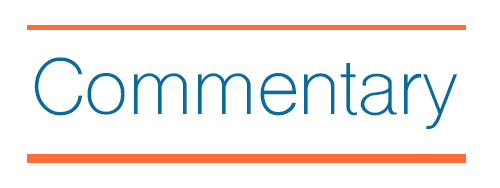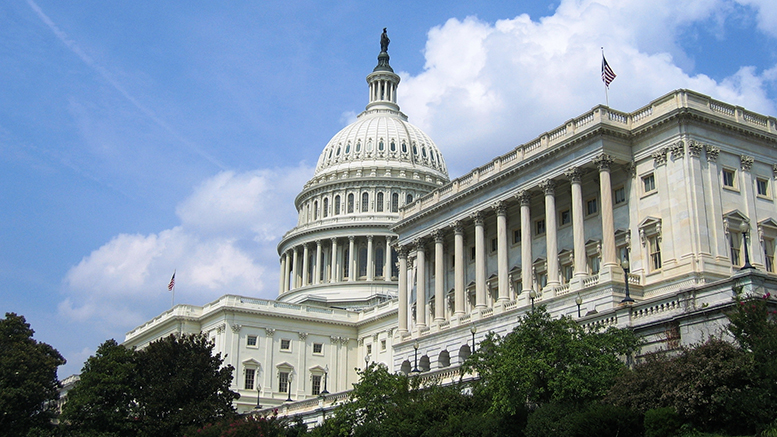Washington Watch is produced by the AACC office of government relations and policy analysis.
Yesterday, Congress released a massive 5,000+ page bill encompassing appropriations for the entire federal government for the remainder of the fiscal year, pandemic relief legislation, a FAFSA simplification bill and scores of other provisions. The bill is expected to pass in the coming days and President Trump has indicated he will sign it.

Hitching a ride on the larger FY 21 omnibus appropriations bill (see below) is the approximately $900 billion Coronavirus Response and Relief Supplemental Appropriations (CRRSA) Act, the first major pandemic recovery bill since the CARES Act passed in March. The bill is largely based on a $748 billion measure crafted by a bipartisan group of Senators, with the addition of direct $600 payments to individuals.
Of that $900 billion, just under $82 billion would be provided for education, with the same three large pots from the CARES Act: higher education, K-12 and a fund for governors to use on both. Governors have $4 billion to spend on K-12 and higher education. The higher education pot comes in just below $22.7 billion.
89% of the higher education pot, or $20.2 billion, would be distributed to public and non-profit institutions of higher education via an allocation formula. This compares to approximately $12.5 billion under the CARES Act, so the CRRSA provides substantially more money to institutions, if not nearly enough to cover institutions’ expenses and losses.
As under the CARES Act, the main formula would be 75% based on an institution’s relative share of Pell grant recipients. The rest of an institution’s share would be 23% based on its non-Pell students and 2% based on its share of Pell recipients that were enrolled exclusively in online education prior to the pandemic. Each one of these categories would be half-based on full-time equivalent students and half-based on headcount student enrollment (i.e. 37.5% Pell FTE, 37.5% Pell headcount; 11.5% non-Pell FTE, 11.5% non-Pell headcount; 1% Pell FTE exclusively online, 1% Pell headcount exclusively online). Splitting the formula between FTE and headcount will result in significantly more funds going to community colleges and their students than under the pure FTE formula used in the CARES Act.
The CRRSA also departs from the CARES Act on the split between institutional funds and student grants. Each institution must dedicate at least the same dollar amount to students with the new funds that it was required to provide in student grants under CARE. However, since institutions will be receiving more funding under the new legislation, the percentage of funds an institution is required to dedicate to student grants will be lower than the 50% required by CARES. Preliminary calculations indicate that percentage to be about 30%. Any money received by an institution based on its online students must all be used for student grants.
Uses of funds provisions, both for institutional funds and student grants, are improved over the CARES Act. Institutions may use their funds to “defray expenses associated with coronavirus,” including lost revenue and expenses already incurred. Student grants, which are now dubbed financial aid grants, may be used for any component of the cost of attendance at the institution or for “emergency costs that arise due to coronavirus.” In addition to institutional funds and student grants, the CRRSA also explicitly authorizes institutions to “carry out student support activities authorized by the HEA that address needs related to coronavirus.” CRRSA extends the more flexible use of funds provisions retroactively to any unspent CARES funds. However, the CARES requirement that 50% of funds be used for student grants still applies to those unspent funds.
Like the CARES Act, the CRRSA is silent as to the definition of “student” for purposes of who may receive grants. This contrasts with the House-passed HEROES Act, which explicitly permitted all students to receive grants, in reaction to the Dept. of Education’s CARES guidance that only allowed Title IV-eligible students to receive grants. It remains to be seen whether that interpretation will apply to the CRRSA, as there is nothing in the bill that explicitly addresses the issue.
The legislation also provides about $1.7 billion would go to institutions eligible for Titles III and V of the Higher Education Act. Those funds would be allocated between the individual programs based on their respective shares of the FY 2020 appropriations, as under CARES. A little more than $100 million would go to graduate and other institutions with the greatest unmet need from the other programs, while for-profit institutions would receive nearly $700 million distributed under the same formula used for the main pot of funds. However, all the money must be used for student grants.
ED must distribute the formula funds, to the extent practicable, within 30 days after CRRSA’s enactment. The Title III and V funds are required to be distributed within 60 days. An institution with an approved application under the CARES Act need not submit a new application for CRRSA funds. Any institutions that did not have an approved CARES application must apply for CRRSA funds within 90 days.
A maintenance of effort provision requires states to support K-12 and higher education at the average proportion of the state budget that each received in fiscal years 2017-19. States may apply to ED for a waiver if they have experienced a “precipitous decline in financial resources.”
FY 21 appropriations finalized
The massive year-end legislation also provided appropriations through the end of the current fiscal year (FY 2021). Appropriators were severely constrained by a tight overall budget cap. Overall, the Department of Education’s funding was increased by less than 2%. Nevertheless, the bill has some definite highlights for community colleges and their students.
In particular, the Pell Grant maximum for the award year that begins July 1 was increased to $6,495, up $150 from the current year and continuing the program’s sustained growth. Also, Federal Work-Study and Supplemental Educational Opportunity Grants (SEOG) received small increases ($10 million and $15 million, respectively). The Child Care Access Means Parents in School (CCHAMPIS) program was increased by $2 million, to $55 million.
For institutional aid, Hispanic-Serving Institutions received a 4.3% increase, while Predominantly Black Institutions were upped by 7.7%. Other, smaller institutional aid programs fared better in percentage terms. Both TRIO and GEAR UP received increases of less than 1%, as did Strengthening Institutions. Perkins State Grants were increased by $52 million, or 4.1%
At the Department of Labor, the Strengthening Community College Training Grant program (SCCTG) was increased by $5 million, to $45 million. Senate draft legislation had proposed eliminating the program, which will now be able to sponsor a second grant competition. The program elicited strong interest from applicants in its initial round of funding. AACC members advocated aggressively on behalf of this program, with beneficial results.
Finally there is a measure of relief that funding for the current fiscal year was concluded in calendar 2020, as this was not a foregone conclusion in recent weeks.
FAFSA simplification
The omnibus bill included a significant simplification of the Free Application for Federal Student Aid (FAFSA) and many other important changes to the federal student aid programs. This legislation had been long sought by retiring Senator Lamar Alexander (R-TN), outgoing chairman of the Senate Health, Education, Labor and Pensions Committee. The legislation picked up steam late this summer when ranking HELP Committee member Patty Murray (D-WA) indicated her willingness to support the bill.
The Simplification Act enables FAFSA filers to rely primarily on IRS data, thus more tightly integrating Title IV into the taxpaying system. According to committee documents, the number of FAFSA questions will drop from 108 to 33. But the bill goes beyond that to rewrite the needs analysis formulas used to allocate funds Applicants will first be assessed as to whether they qualify for the maximum Pell Grant, and if they do they would avoid further needs testing. Other applicants would have a more comprehensive review, but less than under current law. They would receive a “student aid index,” replacing the longstanding “expected family contribution.”
One purpose behind this simplified needs test is to enable prospective low-income students and their families to better understand the availability of student aid well before they reach college. According to bill summaries, some 1.6 million additional students will receive a maximum Pell Grant from the legislation, and 420,000 new students will receive larger Pell Grants. But the bill will have a few losers as well as many winners, even though data outlining this impact has not been publicly released. The changes to the program will also increase its cost; most of this additional cost will be borne by appropriators, in future years. Some additional costs, for the “mandatory” portion (in Budget Act parlance) are being waived from scorekeeping rules requiring an offset. The legislation also eliminates questions concerning drug convictions and Selective Service registration, as long supported by a variety of advocates. All these changes are due to take effect for award year 2023-24.
Second Chance Pell reinstated
After years of lobbying, AACC and others succeeded in securing enactment of Pell Grant eligibility for incarcerated individuals. The legislation contains specific criteria that programs must meet to become eligible but will not take into account an individual’s sentence; in other words, be “sentence blind.” In order for programs to be eligible awarded credits must be transferable to at least one institution in a given state. Programs must also be geared to any applicable state licensure requirements and meet state approval processes. AACC believes that that vast majority of community college prison education programs will be able to meet these requirements. For-profit colleges are not eligible for this new eligbility. These requirements will take effect for the 2023-24 award year unless the Department of Education is able to implement the provision earlier, as it authorized to do.





